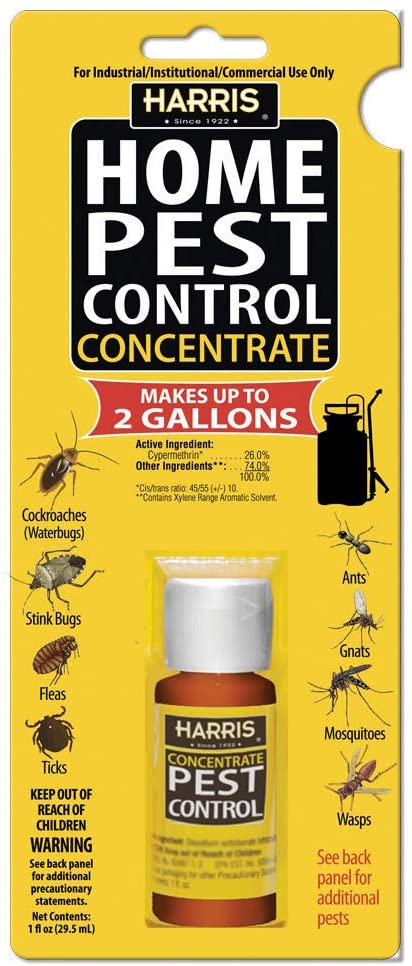Quality A1 Pest Control Services Charlotte - Safeguard Your Home
Quality A1 Pest Control Services Charlotte - Safeguard Your Home
Blog Article
Bed Bug Therapy Malfunction: Contrasting Chemical Vs. Non-Chemical Solutions
In the world of pest control, particularly when managing the relentless issue of bed pests, the choice in between chemical and non-chemical therapy options can be a critical one. Both techniques use distinct benefits and downsides, affecting factors such as effectiveness, safety and security considerations, and total price. By analyzing the nuanced information of each approach, a more clear understanding of which path to pursue in addressing a bed bug invasion can be obtained.
Effectiveness of Chemical Therapies
Chemical treatments for bed bug infestations have been widely recognized for their fast and powerful efficacy in removing these parasites. When taking into consideration the efficiency of chemical therapies, it is essential to understand that they can provide a extensive and fast option to a bed pest trouble. Professional pest control operators typically count on insecticides to target bed pests at various stages of their life process, including eggs, nymphs, and grownups. These chemicals usually function by interfering with the bed bugs' nerves, resulting in paralysis and eventual fatality.
Moreover, chemical therapies have the advantage of supplying residual impacts, indicating that they can remain to get rid of bed insects even after the initial application. This residual action is especially advantageous in combating any kind of possible re-infestations. In addition, the rapid action of chemical treatments can bring relief to individuals dealing with severe bed pest problems, allowing them to gain back control of their living rooms promptly.
Safety Issues With Chemical Solutions
One crucial aspect that calls for mindful factor to consider when making use of chemical services for bed bug treatment is ensuring the safety and security of residents and the environment. Direct exposure to certain chemicals utilized in bed bug therapies can lead to respiratory system issues, skin irritability, or other negative reactions, particularly in individuals with pre-existing conditions or sensitivities.
Moreover, the environmental effect of chemical solutions is an additional considerable consideration. Some chemicals used in bed bug treatments might be hazardous to helpful pests, wild animals, and ecosystems if they seep right into the soil or water systems. It is necessary to make use of chemical treatments carefully, following safety and security guidelines, and thinking about less hazardous choices to alleviate these risks and ensure the reliable and secure administration of bed insect infestations.
Advantages of Non-Chemical Methods
Thinking about the potential safety and security issues and ecological influence linked with chemical solutions for bed insect treatment, checking out non-chemical methods offers an encouraging choice with numerous unique advantages. Non-chemical treatments are eco pleasant, as they do not add to air or water air pollution, making them a lasting selection for parasite control.
In addition, non-chemical solutions can be reliable in targeting bed insects, consisting of hard-to-reach areas where chemical therapies might not pass through - A1 exterminators charlotte nc. Methods such as warm treatment, vacuuming, heavy steam cleansing, and mattress coverings supply comprehensive eradication without the usage of damaging chemicals.
Limitations of Non-Chemical Treatments

Additionally, non-chemical treatments typically require numerous applications to accomplish effective obliteration. This can be taxing and may not constantly ensure total removal of all bed pests and their eggs, specifically in hard-to-reach or surprise locations.
Moreover, the success of non-chemical treatments greatly counts on appropriate application and thoroughness, which can be challenging for individuals without expert expertise. Insufficient application of non-chemical approaches may cause incomplete obliteration, resulting in persistent problems and the need for extra therapies.
Consequently, while non-chemical treatments have their advantages, it is vital to acknowledge these restrictions and consider them when establishing the most reliable approach for taking care of bed insect visit infestations.
Cost Contrast: Chemical Vs. Non-Chemical Options
Offered the limitations connected with non-chemical treatments, a vital element to assess in the context of bed pest monitoring is the price comparison in between chemical and non-chemical choices. Chemical treatments typically include the application of insecticides by professionals, which can range from $250 to $900 per space, depending on the seriousness of the infestation and the size of the location to be dealt with. In contrast, non-chemical therapies like warmth therapy or steam can be a lot more expensive, with prices ranging from $1,000 to $6,000 for an entire home. While the preliminary price of chemical therapies may appear reduced, multiple therapies may be called for to fully get rid of the infestation, possibly enhancing the general expense. On the various other hand, non-chemical options may provide an extra environment-friendly and sustainable service, although they can be cost-prohibitive for some people. Ultimately, when considering the cost of bed insect treatment options, it is essential to weigh the upfront expenditures against the efficiency and long-term sustainability of the chosen technique.
Final Thought

Thinking about the possible safety and security worries and ecological impact associated with chemical services for bed bug treatment, discovering non-chemical techniques presents a promising option with several distinct benefits.Offered the restrictions linked with non-chemical therapies, an essential element to look at this web-site review in the context of bed pest administration is the expense comparison in between chemical and non-chemical choices. In contrast, non-chemical treatments like heat treatment or steam can be more expensive, with costs varying from $1,000 to $6,000 for a whole home. While the preliminary expense of chemical treatments might seem lower, go to my site several treatments may be needed to fully eradicate the invasion, potentially boosting the general price.In verdict, when comparing chemical and non-chemical bed bug therapy choices, it is vital to consider efficiency, security, advantages, limitations, and price.
Report this page